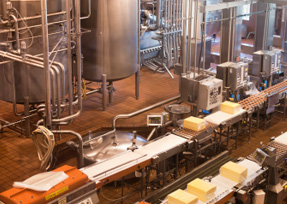The food processing industry is a vast and diverse industry comprising of various divisions. They include dairy products, fruits, vegetables, fish, meat, oils, packaged foods, bakery products, and beverages. The three main factors that decide the energy usage in the food processing industry are lighting, air conditioning and good ventilation. It is vital to keep the temperature under control so that the food and beverages stay fresh and unspoiled.
Thermal processing, dehydration, process heating, cooling and refrigeration in food processing require a lot of energy. Energy is used for food preservation, hygienic and safe packing, and storage, adhering strictly to industry norms. Converting raw materials to products which involve heating, cooling, drying and refrigeration calls for manpower and mechanical energy. Proper storage consumes a great deal of fossil fuel and electric energy as in cooling, drying and freezing. The other energy guzzlers are lighting, heating, ventilation, air conditioning, and transportation.
Lighting plays a very integral part in energy savings. Lighting systems like light-emitting diodes (LEDs) are great energy savers, use less power, and are environment friendly as compared to fluorescent or incandescent lights. Ceilings and walls should be in light shades so they reflect light. Overhead or recessed light fixtures with reflector liners flush with the ceiling do not collect dust and dirt and therefore are more hygienic as they require minimal maintenance.
Proper ventilation is important for a hygienic work environment and the comfort of the personnel. An efficient air circulation system should be free from clogging and prevent fumes and odors, maintain required temperature and humidity levels.
The food processing industry requires a viable and efficient method of cooling and heating techniques. The two can be integrated by using heat energy produced from the cooling system to heat process water and at the same time installing a flue gas condenser on the water boiler. This heat is then transferred to the hydronic under-floor heating circuit. Thus energy required is recycled in this constant heating and cooling process. It saves on fuel and also reduces greenhouse gas emissions.
Waste water recycling and producing bio-mass fuel from the large amounts of biodegradable waste matter released by food processing units can contribute significantly towards reducing energy bills in the food processing industry.
...Read more
Close










